#namibian coast
Explore tagged Tumblr posts
Text

#SEALS#CAPE FUR SEALS#SUNBATHING#CAPE CROSS#NAMIBIA#NAMIBIAN#NAMIBIAN COAST#COAST#CAPE CROSS NAMIBIA#AFRICA#AFRICAN COAST#WILDLIFE#SEAL COLONY#BOKEH#SKELETON COAST#SKELETON COAST NAMIBIA#SKELETON COAST AFRICA#NATURE#OCEAN#WILDLIFE PHOTOGRAPHY#SILHOUETTES#TRAVEL PHOTOGRAPHY#ANIMAL#ANIMALS OF AFRICA#ANIMAL PHOTOGRAPHY#NATURAL WORLD#OUTDOOR PHOTOGRAPHY#WILD#SEAL#TRAVELS
9 notes
·
View notes
Text
Discovering Namibia: A Traveler's Guide to the Jewel of the Desert
Are you ready to embark on an unforgettable journey through the heart of southern Africa? Namibia, a land of vast deserts, rugged coastlines, and diverse wildlife, beckons travelers with its untamed beauty and rich cultural heritage. In this comprehensive travel guide, we’ll delve into Namibia’s fascinating history, highlight its top attractions, and provide essential tips for planning your…
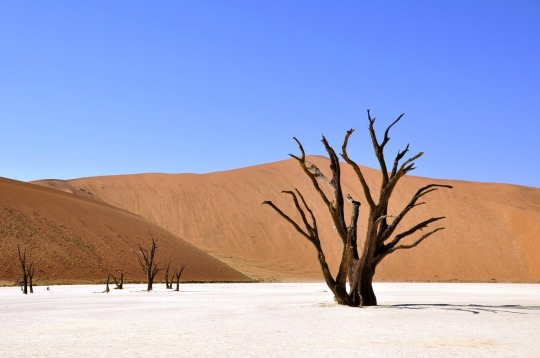
View On WordPress
#A Brief History of Namibia#adventure#africa#Are English and other languages widely spoken in Namibia?#beautiful cities in africa#best countries in africa#Big five in Namibia#destinations#Do I need a 4x4 vehicle to explore Namibia?#Education and Top Universities in Namibia#Etosha National Park:#europe#Fish River Canyon#Hosea kutako international airport#Is it safe to travel independently in Namibia?#Kalahari Desert#kenya#lionheartlrc#Namib desert#namibia#Namibia Practical Information for Travelers#Namibian Roads#norway#Otjiwarongo#places to visit in Africa#Skeleton Coast#Sossusvlei:#Swakopmund#technology#Top places to visit in Namibia
4 notes
·
View notes
Text
"Namibia is the driest country in Sub-Saharan Africa, and home to two of the world’s most ancient deserts, the Kalahari and the Namib. The capital, Windhoek, is sandwiched between them, 400 miles away from the nearest perennial river and more than 300 miles away from the coast. Water is in short supply.
It’s hard to imagine life thriving in Windhoek, yet 477,000 people call it home, and 99 per cent of them have access to drinking water thanks to technology pioneered 55 years ago on the outskirts of the city. Now, some of the world’s biggest cities are embracing this technology as they adapt to the harshest impacts of climate change. But Namibia leads the way.
How did this come about? In the 1950s, Windhoek’s natural resources struggled to cope with a rapidly growing population, and severe water shortages gripped the city. But disaster forced innovation, and in 1968 the Goreangab Water Reclamation Plant in Windhoek became the first place in the world to produce drinking water directly from sewage, a process known as direct potable reuse (DPR).
That may sound revolting, but it’s completely safe. Dr Lucas van Vuuren, who was among those who pioneered Windhoek’s reclamation system, once said that “water should not be judged by its history, but by its quality”. And DPR ensures quality.
This is done using a continuous multi-barrier treatment devised in Windhoek during eight years of pilot studies in the 1960s. This process – which has been upgraded four times since 1968 – eliminates pollutants and safeguards against pathogens by harnessing bacteria to digest the human waste and remove it from the water. This partly mimics what happens when water is recycled in nature, but Windhoek does it all in under 24 hours...
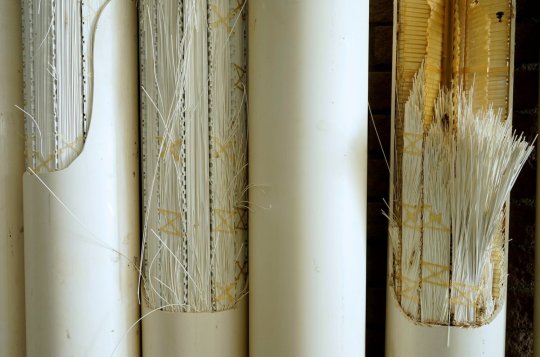
Pictured: These ultrafiltration membranes help to remove bacteria, viruses and pathogens. Image: Margaret Courtney-Clarke
“We know that we have antibiotics in the water, preservatives from cosmetics, anti-corrosion prevention chemicals from the dishwasher,” Honer explains. “We find them and we remove them.”
Honer adds that online instruments monitor the water continuously, and staff ensure that only drinking water that meets World Health Organisation (WHO) guidelines is sent to homes. If any inconsistencies are detected, the plant goes into recycle mode and distribution is halted until correct values are restored.
“The most important rule is, and was, and always will be ‘safety first’,” says Honer. The facility has never been linked to an outbreak of waterborne disease, and now produces up to 5.5m gallons of drinking water every day – up to 35 per cent of the city’s consumption.
Namibians couldn’t survive without it, and as water shortages grip the planet, Windhoek’s insights and experience are more important than ever.
Interest from superpowers across the globe
In recent years, delegations from the US, France, Germany, India, Australia, Singapore, and the United Arab Emirates have visited Windhoek seeking solutions to water shortages in their own countries.
Megadrought conditions have gripped the US since 2001, and the Colorado River – which provides 40 million people with drinking water – has been running at just 50 per cent of its traditional flow. As a result, several states including Texas, California, Arizona and Colorado are beginning to embrace DPR.
Troy Walker is a water reuse practice leader at Hazen and Sawyer, an environmental engineering firm helping Arizona to develop its DPR regulations. He visited Windhoek last year. “It was about being able to see the success of their system, and then looking at some of the technical details and how that might look in a US facility or an Australian facility,” he said. “[Windhoek] has helped drive a lot of discussion in industry. [Innovation] doesn’t all have to come out of California or Texas.”

Pictured: The internal pipes and workings of Namibia's DPR plant. As water becomes scarcer in some parts, countries are looking to DPR for solutions. Image: Margaret Courtney-Clarke
Namibia has also helped overcome the biggest obstacle to DPR – public acceptance. Disgust is a powerful emotion, and sensationalist ‘toilet to tap’ headlines have dismantled support for water reuse projects in the past. Unfortunately, DPR’s biggest strength is also its biggest weakness, as the speed at which water can re-enter the system makes it especially vulnerable to prejudice, causing regulators to hesitate. “Technology has never been the reason why these projects don’t get built – it’s always public or political opposition,” says Patsy Tennyson, vice president of Katz and Associates, an American firm that specialises in public outreach and communications.
That’s why just a handful of facilities worldwide are currently doing DPR, with Windhoek standing alongside smaller schemes in the Philippines, South Africa and a hybrid facility in Big Spring, Texas. But that’s all changing. Drought and increased water scarcity worldwide are forcing us to change the way we think about water.
Now, the US is ready to take the plunge, and in 2025, El Paso Water will begin operating the first ‘direct to distribution’ DPR facility in North America, turning up to 10m gallons of wasterwater per day into purified drinking water – twice as much as Windhoek. San Diego, Los Angeles, California, as well as Phoenix, Arizona are also exploring the technology."
Of course, DPR is not a silver bullet in the fight against climate change. It cannot create water out of thin air, and it will not facilitate endless growth. But it does help cities become more climate resilient by reducing their reliance on natural sources, such as the Colorado River.
As other nations follow in Namibia’s footsteps, Windhoek may no longer take the lead after almost six decades in front.
“But Windhoek was the first,” Honer reminds me. “No one can take that away.”"
-via Positive.News, August 30, 2023
#namibia#africa#desert#water shortage#water conservation#dpr#potable water#water recycling#clean water#drought#united states#colorado river#science and technology#sanitation#good news#hope
2K notes
·
View notes
Text
The Best News of Last Week - March 20, 2023
🌱 - Okra to the Rescue and Other News You Can't 'Lettuce' Miss This Week
1. 4 day work week being pushed in Congress
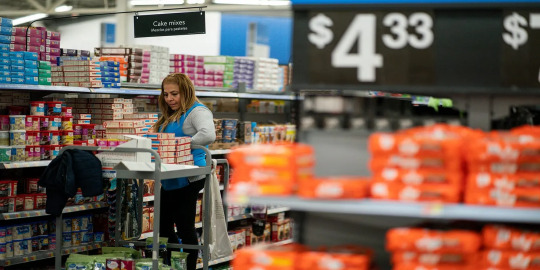
Progressive Democrats, led by Rep. Mark Takano of California, are pushing for a four-day workweek to give Americans more time for leisure outside of work. The proposed Thirty-Two Hour Workweek Act would amend the Fair Labor Standards Act of 1938 to require overtime pay for any employee working more than 32 hours in a week at a rate of time and a half.
More than 70 British companies have started to test a four-day workweek, and halfway through the six-month trial, most respondents reported there has been no loss in productivity.
2. Governor Walz signs universal school meals bill into Minnesota law

Minnesota just became the fourth state in the US to provide breakfasts and lunches at no charge to students at participating schools! The bill was signed into law by Governor Tim Walz on Friday, and it's set to ease the burden on parents who struggle to provide meals for their children.
The new legislation will cover the cost of meals for all students, regardless of household income. This means that families who don't qualify for free and reduced meals but who struggle to pay for food will also be covered. The bill is also meant to prevent "lunch shaming" practices, where children are denied food or given substitutes that indicate their family is struggling financially.
3. Texas Researchers Use Okra to Remove Microplastics from Wastewater

Researchers from Tarleton State University in Fort Worth, Texas discovered that food-grade plant extracts from okra have the power to remove microplastics from wastewater. Polysaccharide extracts from plants like fenugreek, cactus, aloe vera, tamarind, and okra were found to be effective non-toxic flocculant alternatives to remove microplastics from water.
Polysaccharides from okra and fenugreek were best for removing microplastics from ocean water, while a combination of okra and tamarind worked best for freshwater. Furthermore, plant-based flocculants can be easily implemented in existing water treatment facilities.
4. In the northern California snow, stranded cows are getting emergency hay drops
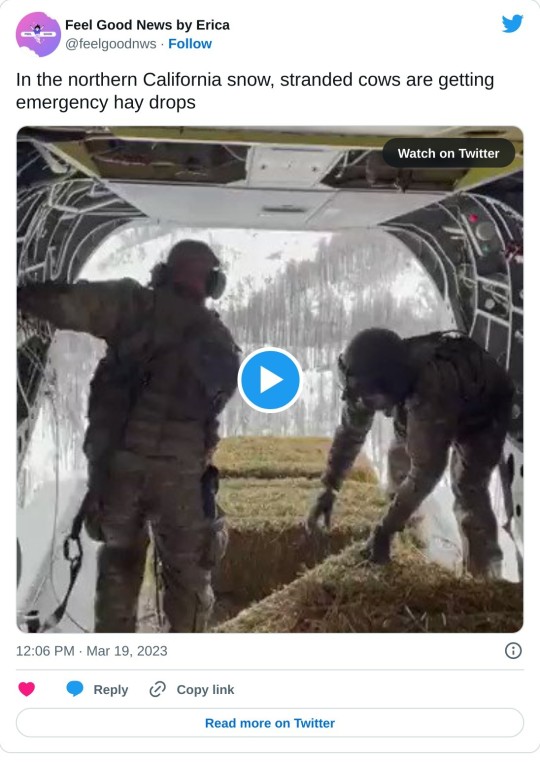
The recent wave of unprecedented snowfall in California has left cattle stranded and starving. When rancher Robert Puga ran out of hay, neighboring Humboldt County officials put together an emergency rescue operation called "Operation Hay Drop." State, federal, and local officials airdropped stranded cattle bales of hay to feed them.
Humboldt County Sheriff William Honsal went to the Coast Guard with the idea of a helicopter rescue, and by midday Sunday, March 5, Operation Hay Drop was underway. So far, Operation Hay Drop has been a success, said rancher Puga. The mission covers about 2,500 head of cattle over several miles.
5. Make-A-Wish Foundation no longer considers Cystic Fibrosis to be automatically qualifying due to improvements in life outcomes for patients
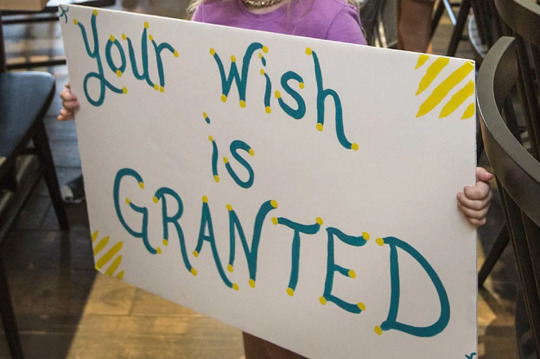
Given the ongoing life-changing advances in cystic fibrosis, beginning in January 2024, cystic fibrosis will no longer automatically qualify for a wish.
6. 1st woman given stem cell transplant to cure HIV is still virus-free 5 years later

In 2017, a woman known as the "New York patient" underwent a stem cell transplant to treat both her cancer and HIV. Now, about 30 months later, she has been virus-free and off her HIV medication, leading some researchers to suggest that she may have been cured of HIV.
The New York patient, received stem cells taken from umbilical cord blood that also had the HIV-resistance genes. However, it's important to note that there is no official distinction between being cured and being in long-term remission, and the medical team is waiting for longer-term follow-up before making any definitive statements.
7. Cheetahs Back in Wild in India After Seven Decades
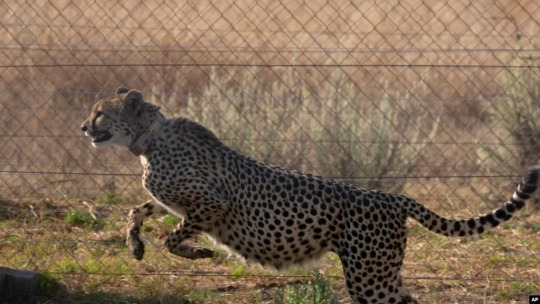
Namibian cheetahs have been successfully reintroduced to India after the world's fastest land animal was declared extinct in the South Asian country more than 70 years ago. Two cheetahs, Obaan and Asha, were released into the wild of Kuno National Park after being brought to India last September.
The species is being reintroduced on an experimental basis as part of a major prestige project for Prime Minister Narendra Modi. India aims to bring in about 100 of the big cats over the next decade. The African cheetah is a different subspecies from the extinct Asiatic cheetah, which once roamed the sub-continent in great numbers.
Lastly, I recently opened a Youtube channel. Subscribe for a weekly compilation of feel good videos.
- - -
That's it for this week :) If you liked this post you can support me with a small kofi donation:
Buy me a coffee ❤️
Let's carry the positivity into next week and keep spreading the good news!
640 notes
·
View notes
Text
hello my darlings
i was on a 3+ week roadtrip and immediately began a fast and furious relocation back to the U.S. (family back home needs us). please keep tagging me in things! i’ll get back on track at some point, promise!
Enjoy this photo of seals I saw chillin’ on the Namibian Skeleton Coast

12 notes
·
View notes
Link
#aerosols#atmosphericscience#duststorm#fluiddynamics#meteorology#physics#planetaryscience#plumes#science
22 notes
·
View notes
Text

Shipwreck on Namibian coast.
#ai painting#namibia#namib desert#sand dunes#ocean waves#shipwreck#abstract art#my digital art#impressionism
2 notes
·
View notes
Note
i love love love your mmppp rewrite project! i'm not sure if you've already answered this but did you have particular ethnicities / countries in mind for the girls?
Thank you! I don't think I've officially talked about the "official" ethnicities/countries before. The real world counterparts for the Mermaid Princesses are as follows:
Lucia - Japanese, American
Hanon - Namibian, Brazilian, Venezuelan
Rina - Irish, Greek, Norwegian
Karen & Noel - Russian, Alaskan Athabaskan
Coco - Colombian, Cambodian, Mexican
Sara - Indian, Egyptian
Seira - Indonesian, Australian
In general, I don't want any of the mermaids to be 100% a certain ethnicity or 100% from a specific culture or country, but also I am drawing on real world things sooo. Idk it makes sense to me that in the world the mermaid kingdoms would be influenced to a degree by the land masses they are by, especially the areas closer to coasts. But having a kingdom just be Underwater Russia or whatever seems kinda dull.
I will also mention that I am white, so I try to err on the side of caution and am a little worried of accidentally writing or drawing something accidentally insensitive. That being said, even as a kid it kinda bothered me that these characters from all over the planet dressed the same and had the same skin tone. A few years back, I played Allegrezza Harmony and that kinda kick-started the whole rewrite project. In the game, Hanon is black, and I was just like CORRECT. Idk it vibed with me. Freckles on Rina also, but I think my redesigns for Rina have gotten less freckled over time? Freckles are cute.
sorry for the ramble lol.
3 notes
·
View notes
Text
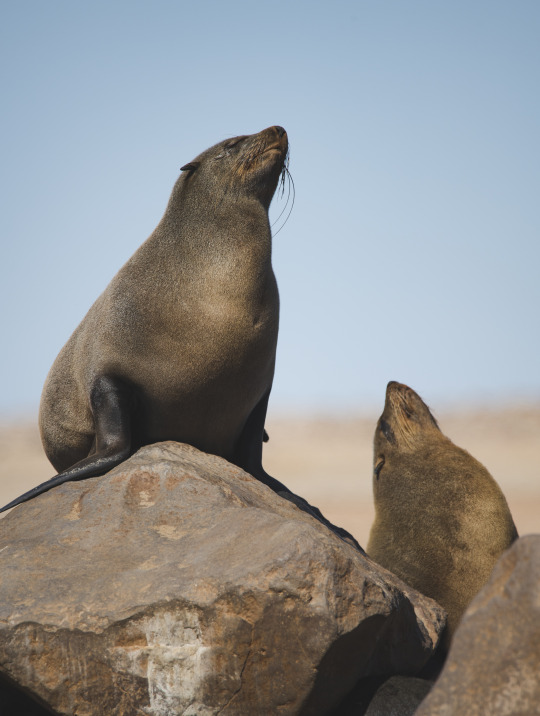
#seals#cape fur seals#sunbathing#cape cross#namibia#namibian#namibian coast#coast#cape cross namibia#africa#african coast#wildlife#seal colony#skeleton coast#skeleton coast namibia#skeleton coast africa#nature#ocean#wildlife photography#travel photography#animal#animals of africa#animal photography#natural world#outdoor photography#wild#seal#travels#travel blog
11 notes
·
View notes
Note
Yeah, I'm thinking the killer whale experience was when he went with his family to the Namibian coast 4 years ago. The waters there have great whites and orcas
Tom doesn't have a good notion of time 😂😂
To be honest who has it after the pandemic? I still think 2017 was like 3 years ago instead of 6 years ago
3 notes
·
View notes
Text
"Feel the rhythm of the ocean as the waves kiss the Namibian coast. Experience the magic where the sea meets the endless dunes. 🌊✨ Book now with Namib Trails and Safaris for an unforgettable adventure!"
📍 Info & Bookings: www.namibtrailsandsafaris.com 📧 Email: [email protected]
#NamibTrailsAndSafaris #Where2GoNamibia #VisitNamibia #OceanMeetsDesert #TravelNamibia #SafariAndSea #ExploreWithUs #BookYourAdventure #NamibiaTourism #MangoOnTour #SafariWithMango #ParrotExplorer
#NamibTrailsAndSafaris #Where2GoNamibia #VisitNamibia #OceanMeetsDesert #TravelNamibia #SafariAndSea #ExploreWithUs #BookYourAdventure #NamibiaTourism #MangoOnTour #SafariWithMango #ParrotExplorer
0 notes
Text
youtube
10 Most Beautiful Places to Visit in Namibia | A Journey Through Africa’s Hidden Gems | Life Travel
https://expedia.com/affiliate/63T94mX
https://airalo.tp.st/UYXhV3Jr
http://knowledgeglaxy.com/travels/
Description:
Hello and Welcome to another video of Life Travels! 🌍 Namibia, with its vast deserts, stunning landscapes, and unique wildlife, is a treasure trove of natural wonders. From the iconic dunes of Sossusvlei to the breathtaking Fish River Canyon, Namibia offers an unforgettable travel experience. Join us as we explore the 10 Most Beautiful Places to Visit in Namibia and uncover the magic of this African gem.
Highlights Include:
Marvel at the towering red dunes of Sossusvlei in the Namib Desert. Explore the ethereal landscapes of Deadvlei. Witness the stunning wildlife of Etosha National Park. Discover the rugged beauty of Skeleton Coast. Visit the charming German-inspired town of Swakopmund. Which of these Namibian wonders would you love to explore? Share your thoughts in the comments below! Don’t forget to like, share, and subscribe to Life Travels for more incredible travel adventures.
#BeautifulNamibia#NamibiaTravel#LifeTravels#ExploreAfrica#NamibianNature#TravelTheWorld#Wanderlust#Youtube
0 notes
Text
Bulgaria Hardwood Lump Charcoal Price List CIF Burgas or Varna port Bulgaria prices

Price list of Mr PER® Charcoal WHOLESALE from manufacturer - Bulgaria Charcoal
Effective from 27.11.2024. Charcoal offer Expiration date : active ORDERS – CUBAN, AFRICAN AND PARAGUAYAN CHARCOAL
We sell Cuban charcoal "Marabu", direct import from our facilities in Cuba.
Our company is the only foreign manufacturer and also direct importer of Cuban charcoal and we work directly with the state company in Cuba. We have Charcoal plant in Nigeria and Paraguay. Unlike other coals marketed as "Cuban", which come from Turkey through Turkish resellers, ours comes directly from Cuba without an intermediary and is 100% Marabou. The Turks mix Cuban Marabou with Turkish and Ukrainian coal, which burns quickly, makes sparks and causes fires. Everyone who has bought coal from us achieves
up to 30% decrease in the quantities used for their grill.
As we are currently planning our order schedule, we would like to ask if you have any charcoal orders for next month. If so, please let us know and we will be happy to provide you with photos, detailed specifications and a ship schedule for Burgas. Here are the current prices for our products EX WORKS BURGAS, BULGARIA: The prices include transport to Burgas and are ex-works from our warehouse in Burgas, Targovska Street, behind Monsieur Bricolage. To see how to get to our warehouse, CLICK HERE .
Cuban charcoal MARABU (20 kg)

Cuban charcoal for charcoal grill MARABU - Premium for restaurants - Marabu A quality: 665 EUR - Marabu AB quality: 628 EUR - Marabu B quality: 604 EUR - Marabu Carbonilla: 486 euros
Cuban charcoal MARABU (15 kg)
- Marabu A quality: 703 EUR - Marabu B quality: 643 EUR
Cuban charcoal MARABU (10 kg)
- Marabu A quality: 713 EUR - Marabu B quality: 652 EUR
Nigerian/Namibian charcoal

Nigerian ACACIA and MANGROVE WOOD charcoal - for barbecue and charcoal grill - Premium for restaurants - Mangrove A quality: 590 EUR
Paraguayan charcoal

Paraguayan Palo Santo Charcoal - White quebracho 10, 15, 30 kg: 760 euros - Palo Santo 10, 15, 30 kg: 790 euros Ivory Coast Charcoal (FOB and CFR prices based on a specific port) - Details and price will be provided upon request. We look forward to hearing from you and assisting you with your order requirements. If you have any questions or need further information, please do not hesitate to contact us. Best wishes, from the Mr PER® Charcoal Team Try it. @2024, Mr PER® Charcoal & FIREWOOD BEACH ASH OLK LTD ****************************** ****************** You can buy charcoal – Mr. PER® at: - Send us a message on WhatsApp, CLICK HERE! - Write to us on VIBER CLICK HERE! - Email: warehousefirewoodexport@gmail. com - [email protected] - - Mobile: +359 886 66 79 79 - WhatsApp: +359 878 999 692 - Website: www.darvenivaglishta.bg - www.firewoodshop.co.il FOLLOW US: - Facebook page - Instagram - TikTok - Price list for Mr PER® firewood Read the full article
0 notes
Text

Lighting the Night in Southern Africa
An astronaut aboard the International Space Station took this nighttime photo of Namibia and South Africa. Taken at a highly oblique angle with a short focal length lens, the photo reflects the sweeping vistas seen by the station’s crew orbiting above Earth. Extending from Namibian cities along the coastline to a cluster of major South African cities illuminated near the horizon, the photo represents more than 1,300 kilometers (800 miles) of the southern African landscape.
Moonlight illuminates the tops of offshore clouds in the foreground. The cloud-free zone along the coast results from the persistent upwelling of deep, cold Atlantic water related to the Benguela Current. This image shows how the zone of colder water suppresses cloud formation and therefore rainfall. The long-term effect is a very dry climate along the coast, which in turn has led to the accumulation of the Namib Desert with its “sand sea” and famous dune fields, which are often photographed by astronauts.
Population density in southern Africa mirrors the region’s rainfall distribution, with small and sparsely populated communities along the hyper-arid coast and major groups of cities inland where rainfall is plentiful. Southern Africa’s largest river, the Orange River, is marked by the lights of several towns that draw water from its channel.
Many clusters of lights in this view are related to towns whose economies are based on mining. In the foreground, Oranjemund and neighboring towns lie at the point where the Orange River enters the Atlantic Ocean. These towns, along with the small coastal town of Lüderitz, are renowned diamond mining centers. The twin towns of Springbok and Okiep, farther south, are centers of copper mining.
The large cluster of lights near the horizon comes from cities in the wetter inland part of South Africa. The largest grouping is the Pretoria-Witwatersrand-Vereeniging conglomeration of cities, where more than 8 million people live. The origin of this major industrial region was the rich gold fields of the Witwatersrand. Rustenburg, the city farthest north in the cluster of lights, is centered on South Africa’s rich platinum mines. The city of Gaborone is Botswana’s capital and a major center for diamond mining corporations. Bloemfontein (top right) is the capital city of the Free State province of South Africa.
Astronaut photograph ISS071-E-523401 was acquired on August 21, 2024, with a Nikon Z9 digital camera using a focal length of 50 millimeters. It is provided by the ISS Crew Earth Observations Facility and the Earth Science and Remote Sensing Unit, Johnson Space Center. The image was taken by a member of the Expedition 71 crew. The image has been cropped and enhanced to improve contrast, and lens artifacts have been removed. The International Space Station Program supports the laboratory as part of the ISS National Lab to help astronauts take pictures of Earth that will be of the greatest value to scientists and the public, and to make those images freely available on the Internet. Additional images taken by astronauts and cosmonauts can be viewed at the NASA/JSC Gateway to Astronaut Photography of Earth. Caption by Justin Wilkinson, Texas State University, Jacobs JETS Contract at NASA-JSC.
0 notes
Text
Namibia's Hidden Treasures Will Blow Your Mind
Discover the pinnacle of luxury in Namibia’s breathtaking landscapes! Join us as we explore the top ten most expensive luxury items and experiences this stunning country offers. From the opulent White Pearl Suite to the exclusive Skeleton Coast Safari, immerse yourself in unparalleled elegance. Marvel at the rare Namibian Blue Diamond and experience the grandeur of the Groot Constantia wine…
#BedtimeRoutine#BetterSleep#HealthySleep#hightechcars#luxurycars#RestfulNights#SleepHacks#SleepQuality#SleepTips#SleepWellness#top10#Top10Tips
0 notes
Text
Namibia Unleashed: Explore the Untamed Beauty of Africa’s Hidden Gem"
Namibia, a land of vast deserts, dramatic landscapes, and rich cultural heritage, is one of Africa’s most captivating yet often overlooked destinations. From the towering dunes of Sossusvlei to the rugged Skeleton Coast, Namibia offers an adventure like no other, where nature's raw beauty is on full display.
At our travel agency, we invite you to discover the untamed beauty of Namibia through personalized travel experiences. Whether you're a thrill-seeker eager to conquer the world’s tallest sand dunes, a wildlife enthusiast on the lookout for desert-adapted elephants and elusive cheetahs, or a culture lover wanting to connect with the Himba people, Namibia promises a journey that is both unique and unforgettable.
Imagine starting your adventure in the ethereal landscapes of the Namib Desert, where the shifting sands create a mesmerizing, ever-changing canvas. Explore Deadvlei, a surreal white clay pan dotted with ancient, sun-bleached trees, or take a hot air balloon ride at sunrise, floating over the endless dunes as the sky paints itself in hues of pink and gold.
For wildlife lovers, Etosha National Park offers incredible game viewing opportunities. Spot lions, rhinos, and giraffes as they gather around the park’s many waterholes, and experience the thrill of a night safari under a star-studded sky.
Namibia is also home to the mysterious Skeleton Coast, where shipwrecks and bleached whale bones tell tales of the Atlantic’s powerful forces. This remote and hauntingly beautiful region is perfect for those seeking solitude and a deeper connection with nature.
Our tailored itineraries ensure that every aspect of your Namibian adventure is customized to suit your interests and preferences. From luxury lodges to authentic cultural encounters, we take care of all the details so you can focus on soaking in the incredible beauty that Namibia has to offer.
Conclusion: Namibia is a land of contrasts and wonders, offering a truly unique travel experience for those willing to venture off the beaten path. With our expertly crafted travel packages, you can explore Namibia’s untamed landscapes, encounter its rich wildlife, and immerse yourself in its vibrant cultures. Let us guide you through Africa’s hidden gem, where every moment is an adventure waiting to unfold.
0 notes